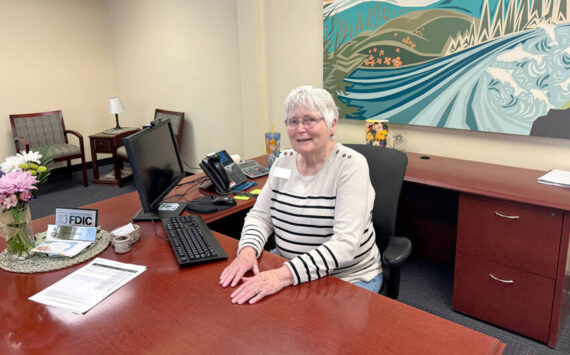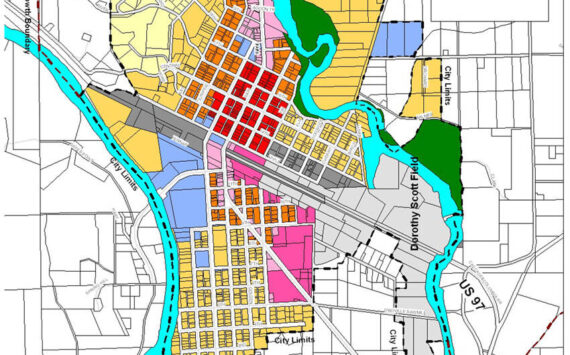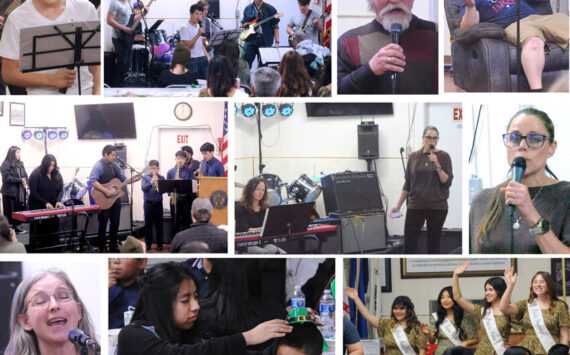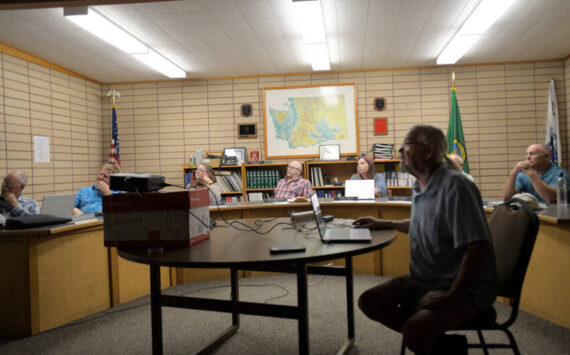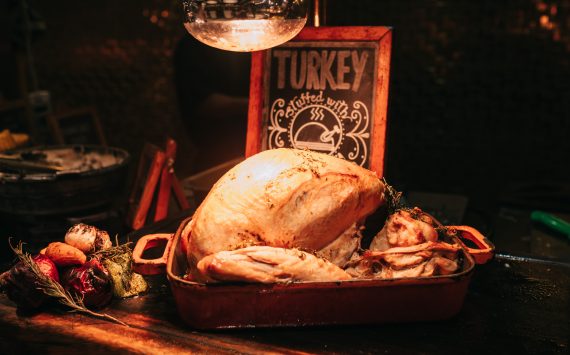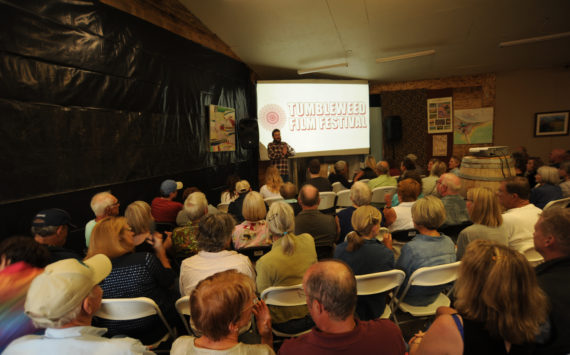He writes about spending weekends and holidays in his family’s cabin he describes as sandwiched between Osoyoos and Oroville. He says Oroville never fails to impress and marches to the beat of its own drummer.
“Oroville, you’re like no other small town. You just have a way of bringing things together. Nestled against the border with Osoyoos, Canada, you graze the fingertips of the Sonora Desert, finishing their long reach from Mexico. Geographically you’re far from the middle, but culturally, right at the center of three countries.
“Oroville, you never fail to impress. Bringing three countries together is no easy feat, yet you do it without batting an eye. You charm them and then claim them as your own. Coming up on weekends and holidays, I’ve gotten to know your people a little, but mine a lot, at our little house by the lake. With no TV, no clock on every wall, and no mall to run off to, you bring us together. Whoever ‘us’ is on that particular day.”
Local historian Arnie Marchand, Colville Tribal member and promoter of the “Three Nation Vacation,” might argue that the three nations in play are that of the United States, Canada and the Native Americans/First Peoples. We all know how much Canadians love Mexican food and flock to Trinos, Rancho Chico, La Ultima (see letter this week) and the taco wagons — maybe Robinson would accept Oroville as bringing four nations together.
At the last Oroville Chamber meeting, Lorentzen suggested we embrace the cultural differences. Use them as a means to bring more people to visit, to stay and spend their money. She also puts Oroville in the middle – the middle of the Okanagan/Okanogan – and suggests Americans and Canadians work together to have visitors going north and south and share in what makes this area special.
After we shared the link with the Love Letter on Facebook and Twitter there were a lot of people asking what Robinson was talking about when he wrote that the new stoplight was big, albeit old news in the local paper (that’s us). Rather than describing Oroville itself, he was describing small towns in general, the “every small town.” That is unless he was talking about the stoplights at the border crossing, which we doubt.
The author isn’t the first to wax poetic about Oroville (or Tonasket, for that matter). Our communities have graced the occasional column in big dailies like the Seattle Times.
Robinson’s letter is a romanticized version of the town, something that perhaps not everyone sees. It may make you recall the wonder one might have felt growing up here, something we often take for granted. Seeing the town through his eyes can make you a little jealous of people like him who come here to get away from things like the big city. While we toil to earn our bread in “God’s Country” Robinson’s letter might just help a local reconnect with the reasons we live here in good times and bad.
To read Robinson’s full “Love Letter to Oroville,” see http://www.huffingtonpost.com/love-letters/love-letters-oroville-washington_b_3401729.html.

